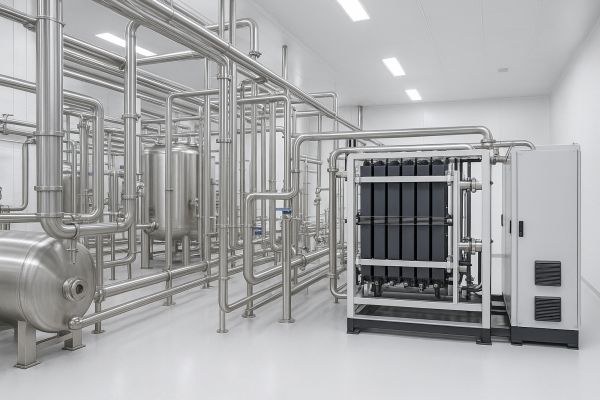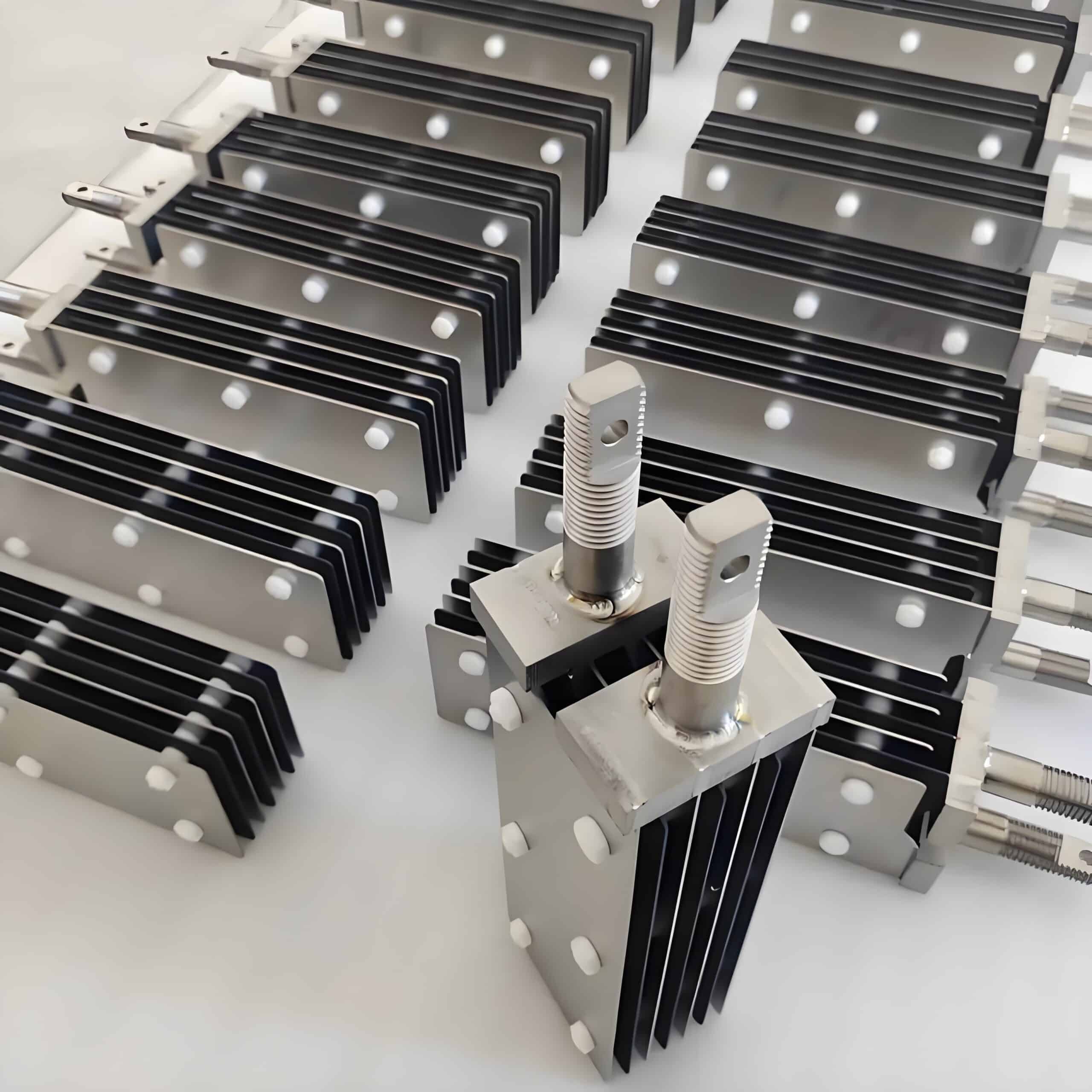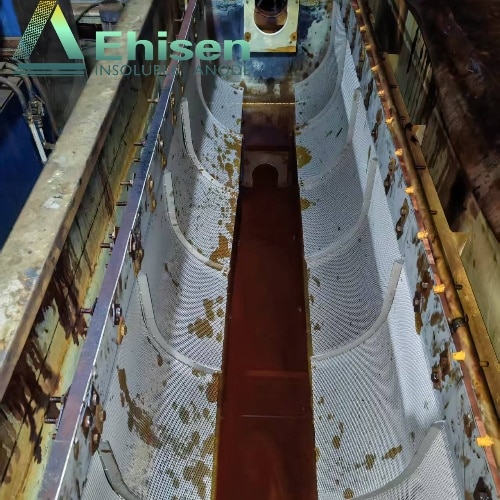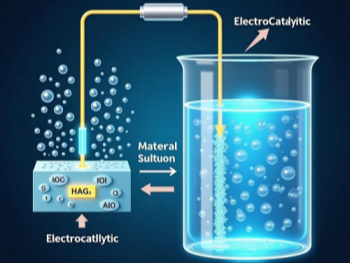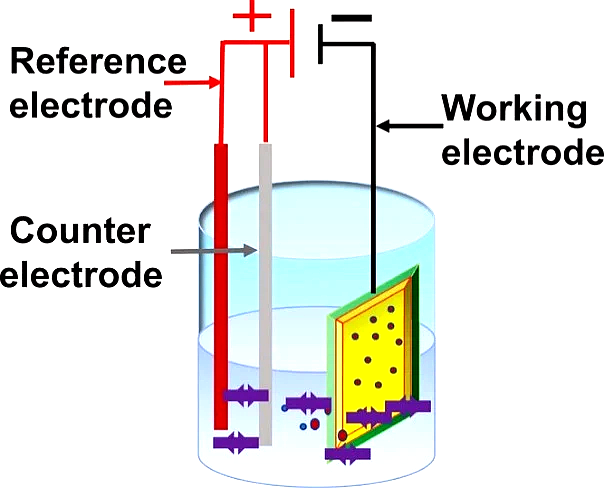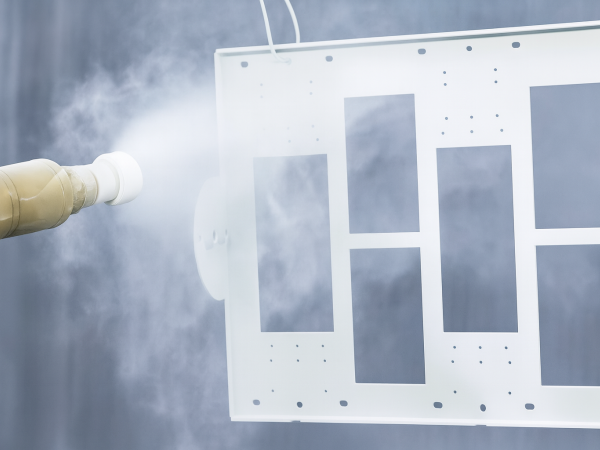Printed Circuit Boards (PCBs) serve as the core components of electronic products, and their manufacturing quality directly impacts the performance and reliability of electronic devices. Among the numerous processes in PCB manufacturing, copper electroplating is critically important, determining the conductive properties of circuits, signal transmission quality, and the service life of the final product.
As electronic products trend towards lighter, thinner, shorter, and smaller designs, PCB trace widths continue to shrink, and aperture sizes miniaturize. Traditional soluble anodes struggle to meet the demands of high-precision electroplating.
Mixed Metal Oxide (MMO) Titanium Anodes, as a revolutionary insoluble anode technology, are progressively replacing traditional phosphorized copper anodes and becoming the preferred electrode material for high-end PCB manufacturing due to their exceptional electrochemical stability, dimensional precision, and environmental benefits.
1. Technical and Economic Comparison of Insoluble vs. Soluble Anodes

In PCB copper electroplating processes, anode selection directly determines plating quality, process stability, and production costs. The industry currently employs two main technological routes: traditional soluble phosphorized copper ball anodes and emerging Mixed Metal Oxide Titanium Anodes.
Fundamental differences in working principles underlie their performance divergence. Soluble anodes operate through the oxidation reaction: Cu → Cu²⁺ + 2e⁻, continuously replenishing copper ions in the electrolyte. Titanium anodes, as insoluble anodes, facilitate a completely different oxygen evolution reaction at their surface: 2H₂O → O₂↑ + 4H⁺ + 4e⁻. This reaction not only fails to produce copper ions but also generates hydrogen ions. Therefore, they must be paired with a copper oxide powder replenishment system to maintain copper ion balance in the electrolyte.
Electrochemical performance comparison reveals significant advantages of titanium anodes. The precious metal oxide coating (e.g., IrO₂-Ta₂O₅) on titanium anodes exhibits high electrocatalytic activity and low oxygen evolution overpotential (1.385 V). Compared to traditional lead anodes (~1.563 V), this can reduce cell voltage by 10%-20%, leading to substantial energy savings.
Under a current density of 2.37 A/dm², a titanium anode system achieves a deep throwing power (TP value) of 83.68% for micro-vias of 0.15 mm diameter with a 10:1 aspect ratio, meeting the technical requirements for high-density interconnect (HDI) boards.
Regarding process stability, titanium anodes demonstrate unique value. Their dimensional stability (variation rate < 0.1%) ensures constant inter-electrode distance, avoiding current distribution fluctuations caused by the continuous dissolution of soluble anodes. Titanium anodes produce no anode slime, eliminating plating solution contamination and plating defects caused by anode slime. This characteristic is particularly crucial for high-end PCB products requiring fine lines and high reliability.
Economic analysis highlights the comprehensive cost advantage of titanium anodes. Although the initial investment cost for titanium anodes is higher (requiring a copper oxide replenishment system), their service life can reach 2-5 years, far exceeding the replacement frequency of phosphorized copper balls.
A comparative analysis on a VCP production line showed that while using titanium anodes increased material costs by approximately ¥10.5 per square meter, the increased production capacity from reduced anode maintenance time (yielding an additional 11,313 square meters annually) and the improved product yield rate (reaching 90%) generated approximately ¥2.44 million in additional annual revenue, fully offsetting the increased costs.
Table 1: Comprehensive Comparison of Insoluble Anodes vs. Soluble Anodes in PCB Electroplating
| Comparison Dimension | MMO Titanium Anode | Traditional Phosphorized Copper Ball Anode |
|---|---|---|
| Working Principle | Oxygen evolution reaction, non-dissolving | Copper dissolution reaction |
| Current Efficiency | ≥95% | 70%-85% |
| Throwing Power (TP) | ≥83.6% for AR 10:1 vias | ~75% for AR 8:1 vias |
| Cell Voltage | Low (O₂ evolution potential 1.385 V) | High (~1.563 V) |
| Anode Maintenance | Maintenance-free period: 2-3 years | Requires periodic cleaning & replenishment |
| Environmental Impact | No heavy metal pollution | Risk of copper sludge & phosphorus pollution |
| Service Life | 2-5 years (substrate reusable) | 6-12 months |
2. Innovative Application of Titanium Anodes in Vertical Conveyorized Plating (VCP)
Vertical Conveyorized Plating (VCP) lines are the mainstream equipment in PCB manufacturing, with over 500 units installed domestically. As VCP line lengths increase (exceeding 90 meters at maximum), the maintenance issues of traditional phosphorized copper anodes become increasingly prominent. Titanium anode technology, leveraging its maintenance-free characteristics and superior plating uniformity, is rapidly gaining adoption in this field.
Titanium mesh structural design is a core innovation for VCP applications. Titanium mesh specifically developed for VCP employs a diamond-shaped grid design, with grid width precisely controlled between 3.0-3.5 mm, length 5.5-6.0 mm, and thickness 0.5-1.0 mm. This geometrically optimized design ensures anode surface flatness, effectively preventing tip discharge phenomena and resulting in more uniform current distribution. The mesh is formed by cross-welding primary and secondary titanium wires, enhancing mechanical strength and guaranteeing dimensional stability in high-speed electroplating environments.
Throwing Power (TP) is a critical indicator for evaluating VCP performance. Tests conducted on a 21-copper-tank steel belt VCP line using Iridium-Tantalum oxide-coated titanium anodes paired with specialized additives showed:
At a current density of 2.37 A/dm² and line speed of 1.2 m/min, the minimum TP value for 0.15 mm micro-vias with a 10:1 aspect ratio reached 83.68%.
Even under a high current density of 3.23 A/dm², a TP value of 70.8% was maintained.
This stable deep plating capability enables VCP lines to handle the demands of high-aspect-ratio through-hole plating, meeting the manufacturing requirements for multilayer boards and HDI boards.
Enhanced Production Efficiency is another significant advantage offered by titanium anodes in VCP lines. Allowing for higher operating current densities (10%-20% higher than phosphorized copper anodes), production line speed can be increased from 1.0 m/min to 1.1-1.2 m/min under the same equipment conditions, equivalent to a 10%-20% capacity increase. Crucially, titanium anodes entirely eliminate the downtime required for maintaining traditional phosphorized copper anodes (e.g., cleaning anode bags, replenishing copper balls), increasing equipment utilization by approximately 15%. This holds significant economic value for high-volume, continuous PCB production.
Microvia Plating Quality improvement directly impacts PCB product reliability. The titanium anode system, combined with specialized additives, optimizes tertiary current distribution (primary, secondary, and micro-distribution), significantly improving plating uniformity within vias. In Pulse Periodic Reverse (PPR) plating, titanium anodes effectively prevent the “dog-boning” effect (thicker plating at via mouth, thinner at center), ensuring uniform copper thickness distribution within the via. This characteristic is particularly vital for high-end products like high-frequency/high-speed boards and IC substrates, reducing signal transmission loss and enhancing electronic device performance stability.
3. Key Technological Breakthroughs of Titanium Anodes in Horizontal Copper Plating (HCP)

Horizontal Copper Plating (HCP) technology is increasingly adopted in high-end PCBs due to its suitability for thin boards and ultra-fine line manufacturing. The innovative application of titanium anodes in HCP systems addresses the critical technical challenges of micro-blind via filling and high uniformity that are difficult to overcome with traditional plating.
Micro-Blind Via Filling Process is a core challenge for HCP systems. Micro-blind vias on HDI boards (typically 100μm diameter) require perfect filling to avoid voids affecting electrical connectivity. Research indicates that when using titanium baskets as insoluble anodes, precise current density control becomes paramount for filling quality. Low current density (1.0 A/dm²) achieves high fill rates (>95%) but suffers from low production efficiency. Conversely, high current density (1.8 A/dm²) shortens plating time but easily causes voids within the via. An innovative three-stage combined current process was developed: 1.8 A/dm² × 15 min + 1.0 A/dm² × 30 min + 1.8 A/dm² × 15 min. This successfully achieved a high fill rate of 96.1% while shortening the total plating time, significantly boosting production efficiency.
The synergistic effect of Pulse Plating Technology and titanium anodes is particularly pronounced in high-aspect-ratio microvia plating. In traditional DC plating, the skin effect causes higher current density at the via mouth than inside, leading to uneven copper deposition. Titanium anodes paired with positive-pulse reverse (PPR) technology effectively optimize current distribution: Copper deposits inside the via during the forward pulse, while the reverse pulse selectively etches the over-plated copper at the via mouth, achieving uniform copper plating within the via. This technology is especially suitable for plating vias below 0.1 mm, solving cost pressures stemming from rising raw material prices while improving product yield.
Thin-Board Plating Adaptability is another advantageous area for HCP. VCP lines, constrained by clamps, typically handle boards up to 4.5 mm thick. In contrast, HCP systems paired with titanium anodes enable stable transport and plating of ultra-thin substrates (20-100 μm). This is crucial for manufacturing thin electronic components like Flexible Printed Circuits (FPC) and IC packaging substrates. The dimensional stability of titanium anodes prevents changes in inter-electrode distance during plating, ensuring uniformity in thin-board plating and reducing warpage issues.
Copper Foil Post-Treatment is a specialized application of titanium anodes in HCP. In electrolytic copper foil production, titanium anodes (especially Iridium-Tantalum coatings) demonstrate superior electrochemical stability and cost-effectiveness compared to platinum-plated electrodes in alkaline copper plating systems. Their oxygen evolution overpotential (~1.385 V) is significantly lower than platinum-plated electrodes (1.563 V), leading to reduced cell voltage and energy savings. MMO anodes cost only about 80% of platinum-plated electrodes while achieving comparable lifespan in alkaline electrolytes, making them an economically efficient choice for copper foil surface treatment.
4. Technological Challenges and Development Directions
Despite the significant advantages demonstrated by MMO Titanium Anodes in PCB electroplating, the technology still faces several challenges requiring collaborative innovation across industry, academia, and research to overcome bottlenecks.
Coating Failure Mechanism is the core issue limiting titanium anode lifespan. In highly oxidizing electrolytic environments, titanium anode coatings primarily face two failure modes:
Coatings prepared by thermal decomposition exhibit a “mud-cracked” structure, with failure mainly manifested as dissolution of active components and local spalling.
Coatings prepared by sol-gel methods show a “gravel-like” micro-crack structure, with failure primarily caused by passivation layer formation.
Research confirms that adding an interlayer (e.g., TiN or Pt-containing titanium alloy) significantly extends lifespan. Iridium-Tantalum coated titanium anodes with a Pt-containing titanium alloy interlayer showed an accelerated lifetime (54 hours) more than double that of anodes without an interlayer (25 hours). Nanocrystalline modification is also an effective approach; anodes with added nano-IrO₂ powder exhibited a 36.8% increase in accelerated electrolysis lifetime compared to traditional Ir-Ta coated anodes.
Acidic Environment Stability presents a specific challenge for titanium anodes in PCB electroplating. PCB sulfate copper plating solutions typically contain tens of ppm chloride ions, which accelerate coating spalling during reverse pulse plating. Research indicates that traditional platinum-plated titanium anodes are prohibited in sulfuric acid electrolytes containing chloride. Developing specialized coatings resistant to chloride ion corrosion is therefore a key technological challenge. Quaternary system coatings (e.g., Ru-Ti-Ir-Ta) demonstrate superior stability in acidic chloride environments compared to binary coatings through component optimization, but breakthroughs in preparation processes and cost control are still needed.
Additive Compatibility is a critical factor affecting plating quality. Highly reactive oxygen atoms and hydroxyl radicals generated during the operation of insoluble anodes accelerate additive decomposition, leading to increased consumption. Developing specialized additives compatible with the titanium anode system is an urgent industry need. Domestically developed Brand B’s 828 series additives designed for insoluble anodes achieved a 4-month service life on VCP lines, with consumption comparable to soluble anode systems, providing crucial support for the wider adoption of titanium anodes.
Substrate Passivation is a potential risk for titanium anodes. If coating defects exist, the titanium substrate can oxidize, forming a high-resistance TiO₂ insulating layer, causing abnormal cell voltage increases or even anode failure. Substrate surface pretreatment technology is a key direction for solving this problem. Studies show that Iridium-Tantalum anodes with titanium substrate nitridation treatment at 550°C possess the highest electrochemical catalytic activity and longest accelerated lifetime (1,066 hours), while maintaining the lowest cell voltage.
Bubble Masking Effect at High Current Density is particularly prominent in horizontal plating. When current density exceeds a certain threshold (e.g., 8 A/dm²), oxygen bubbles generated on the anode surface form a persistent gas film, hindering current conduction and leading to localized overheating and accelerated coating failure. Optimizing titanium mesh structure (e.g., developing gradient porosity designs) and installation angles, coupled with high-flow electrolyte circulation systems, are effective means to reduce the bubble masking effect. However, stability under very high current densities (>10 kA/m²) still requires further improvement.
5. Conclusion

Mixed Metal Oxide Titanium Anodes, as a revolutionary technology in the PCB electroplating field, are profoundly transforming traditional printed circuit board manufacturing processes. As electronic devices evolve towards higher performance and miniaturization, PCB trace widths continue to shrink, and apertures miniaturize, placing higher demands on plating uniformity, throwing power, and process stability.
Leveraging their dimensional stability, electrochemical efficiency, and environmental benefits, titanium anodes demonstrate irreplaceable advantages in both Vertical Conveyorized Plating (VCP) and Horizontal Copper Plating (HCP).
Technological innovation is endless. Titanium anodes still face challenges regarding coating durability, stability in acidic environments, and adaptability to high current densities. Addressing these requires collaborative efforts among materials scientists, electrochemists, and PCB manufacturing experts to achieve continuous breakthroughs in areas such as coating nanostructuring, substrate modification, and specialized additive development.
With the rapid development of industries like 5G communications, artificial intelligence, and new energy vehicles, the demand for high-end PCBs is surging. Titanium anode technology will embrace broader application prospects, providing core support for the precision-oriented and green transformation of the electronics manufacturing industry.

